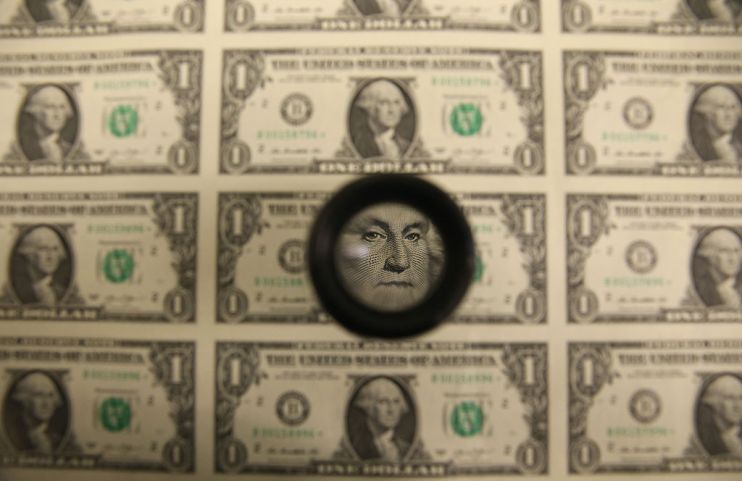Almost a fifth of ALL US dollars were created this year

About 20 per cent of all US dollars were created this year.
The Federal Reserve has printed unprecedented amounts of money to support the coronavirus-stricken economy. It has sparked debates about inflation and helped asset prices soar.
Data from the Fed shows that a broad measure of the stock of dollars, known as M2, rose from $15.34 trillion (£11.87 trillion) at the start of the year to $18.72 trillion in September.
The increase of $3.38 trillion equates to 18 per cent of the total supply of dollars. It means almost one in five dollars was created in 2020.
M2 includes physical notes and coins, banks reserves held at the Fed, accounts at banks, and money market mutual funds.
A narrower measure of money known as the monetary base or M0 – which is physical money and bank reserves at the Fed – rose from $3.44 trillion in January to $4.8 trillion in August, the latest available figures. That is a 28 per cent jump.
Fed pumps more than $3 trillion into economy
The huge growth in the stock of dollars reflects the massive interventions in the economy by the Fed, which is in control of the US’s money supply.
In the spring, as markets crashed and normal life was paused, it pumped around $3 trillion into the economy.
Although it is often described as printing money, the Fed in practice creates digital dollars to buy up government bonds and other securities in the secondary market. The policy, known as quantitative easing (QE), aims to flood the markets with cash to keep borrowing cheap.
Banks also create money when they lend. Most money in the economy is created this way. Only about $2 trillion are in circulation as physical currency.
“What the Federal Reserve did is in no way unique,” said Erik Norland, senior economist at CME Group. He said the Bank of England, the European Central Bank and others created money at a similar rate.
Norland said they were reacting to a contraction in credit, which is the lifeblood of the economy. “In order to offset a contraction in credit, the central bank has to create a lot of money… to make sure the economy keeps functioning.”
Will the dollar supply surge make prices jump?
The Fed’s unprecedented actions have sparked a debate about whether the surge in dollars will lead to inflation.
Many economists are skeptical. Andrew Hunter, senior US economist at Capital Economics, said the relationship between the money supply and inflation has “in reality” been “pretty weak or arguably non-existent for a few decades now”.
“We had these same concerns back in 2008/9, that it was going to trigger a surge in inflation. Clearly that didn’t happen.”
Norland said it could be argued that there has been inflation in other parts of the economy.
He pointed to booming prices in stocks, bonds, and commodities such as gold and silver. The US S&P 500 stock index, for example, hit a record high in August before falling back slightly.
The Fed’s government bond purchases have led some to accuse the bank of funding the huge amounts of government spending. They say this erodes the Fed’s independence.
But the Fed – like central banks around the world – has been unapologetic. Chair Jay Powell last month pledged economic support “for as long as it takes”.
Norland said he expected the Fed to create more dollars at some point via QE. He said the bank could expand the money supply “on and off” for a while like it did after the 2008 financial crisis.